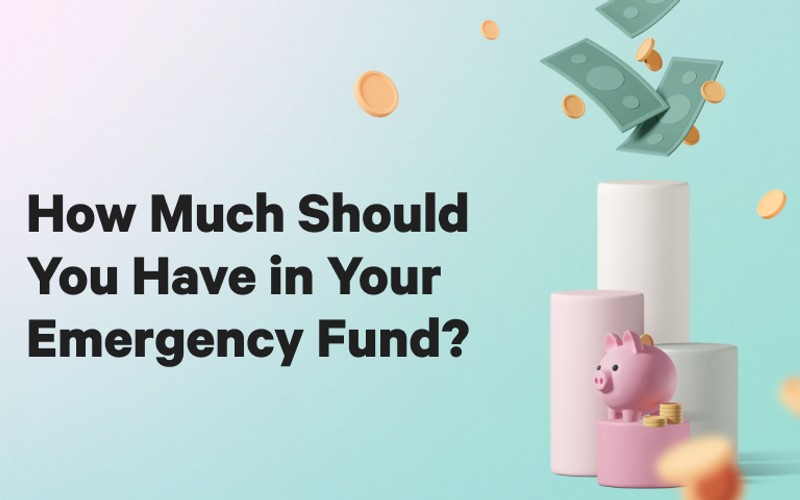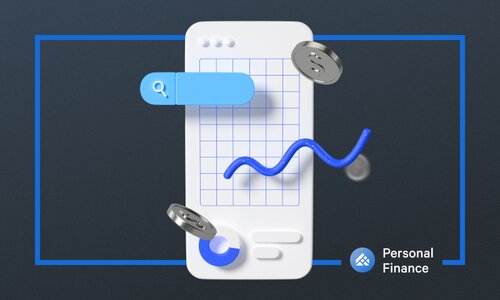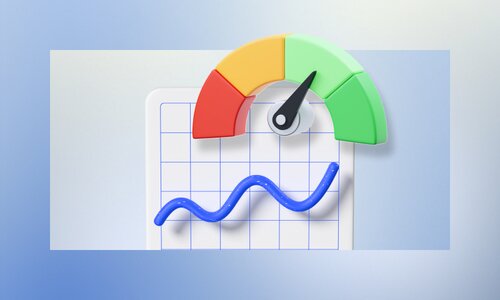Your income stream may seem stable….until it’s not. As we learned in 2020, life throws curveballs. During the pandemic, the unemployment rate leaped, with some industries hit harder than others. By July 2021, more than 39% of all out-of-work Americans had been unemployed for at least six months.
One lesson learned from this shared crisis: an emergency fund is essential for weathering any financial storm that comes your way. Maybe it won’t be a global event like a highly contagious disease shutting down supply chains and quarantining people to their homes. It could be as simple as cutbacks at work, a car accident that incapacitates the breadwinner, or a natural disaster.
But how much should you have in your emergency fund? And where do you start?
Benefits of an emergency fund
An emergency fund cushions against unexpected expenses, like a medical emergency or job loss. It can help people stay afloat during a financial crisis.
Emergency saving funds can be a lifeline when facing:
- Unanticipated medical bills not covered by insurance
- Unemployment
- Significant car repairs
- Significant and unforeseen home repairs (like basement flooding or roof damage)
Having an emergency fund ready means you don’t have to dip into your investments, retirement funds, or credit cards when something goes wrong, which can help protect your long-term financial security. Without it, you could be paying off high-interest debt for years, directly impacting your ability to grow wealth, boost your credit scores, and prepare for retirement.
How much should you have in your emergency fund?
So how much should you have in your emergency savings? What do you need to keep a roof over your head, everyone in your household reasonably fed, and pay your debt obligations? Aiming for three to six months of expenses is a good rule of thumb.
Start by listing your essential expenses. It includes rent or mortgage payments, groceries, utilities, transportation, and minimum debt payments.
If you’re a whiz at budgeting and are already tracking your personal finances, this should be quick and easy. And if you still need to start keeping track of where your money is going? Active financial planning is vital to meeting your short-term and long-term goals. You may be eating out more or online shopping more than you think.
Remember, the three-to-six-month benchmark is not a hard and fast rule but a starting guideline. You may want to adjust the amount up and down to account for your lifestyle, dependents, and income. Another consideration: what’s the job market like in your area? Could you be re-employed quickly if you lost your job?
Remember to reassess your emergency fund every year. Life changes, after all, and so does your financial situation. You may have bought another car, added a kid to the family, or had living costs increase due to yearly inflation. You may also want more if you work as a freelancer, in an industry with a commission-based structure, or have a seasonal job.
Strategies to save for a financial emergency
If that initial number sounds too big, don’t worry. Everyone starts somewhere, and saving something is better than saving nothing!
The best way to start building your emergency fund is to prioritize savings. This plan can help you build over time:
Set an emergency savings goal
Having a goal and watching the gap close can motivate you to save rather than splurge on a shopping spree. Many tools can help you calculate how long it will take to build up your savings account. If you’re just starting, shoot for a number that would cover a significant bill, like a car repair. From there, keep slowly and steadily growing. Why not start with $1,000? Only around 44% of people have enough money to pay this amount from savings, so by hitting this mark, you’re on your way to being prepared.
Separate saving accounts
Next, prioritize putting money aside each month into an account you don’t touch unless necessary. One strategy is to automate your savings by setting up a direct deposit from each paycheck into a separate emergency fund account.
You can also use a recurring transfer or set up an automatic savings account that moves a certain amount each month into your emergency fund.
Save extra when you can
Consider putting any extra money — like bonuses, tax refunds, or inheritance — into your emergency fund. You can also trim your budget, look for areas where you can reduce spending, and redirect those funds until your emergency account reaches the amount you want.
Stay on top of debt
When debt gets out of hand, it snowballs, creating a difficult situation to recover from. Around 34% of Americans still have less in their emergency fund now than before the pandemic.
If you struggle to pay off your debts, prioritize them over building up the emergency fund. This will help ensure you don’t rack up more debt with high-interest rates. Once it’s resolved, you can focus on building up your savings.
Where to keep your emergency fund
You want a place to stow your emergency funds that are easy to access, protected, and set up so you won’t accidentally spend it. You can double down on its gains by stashing the fund in bank accounts that also pay interest, so you keep adding to that fund with no work on your part.
High-yield savings accounts meet both criteria. These accounts pay much higher interest than traditional checking or savings accounts, usually .50% or more.
Another option is a money market account, which pays a higher interest rate than a savings account, usually with more liquidity. You can also use certificates of deposits (CDs), but these don’t offer the same liquidity as a savings or money market account.
Ensure the financial institution you choose is member FDIC-insured so your money is safe from bank failure.
Should I invest my emergency fund?
While investing your emergency fund for higher returns may be tempting, you never know when you’ll need access to that money.
Remember, an emergency fund protects you in case of financial hardship. You may need to withdraw funds quickly. Having easy access to your stash is essential.
Should my retirement fund be my emergency savings?
An emergency fund and a retirement fund serve two purposes, so they should be kept separate.
Your retirement fund is just that, for retirement, and should be invested with a long-term goal in mind. You risk your long-term financial security if you leverage retirement accounts for a financial emergency. You may have to work well into your retirement years to recoup the loss and meet your living expenses as you age.
Plus, withdrawing early from accounts like IRAs and 401(k)s could come with hefty tax penalties.
What to not use your emergency fund for
An emergency fund is for true emergencies only — unplanned things like a job loss or medical need. It’s not intended for luxuries like vacations or home improvements. If you find yourself dipping into your emergency fund regularly, it may be time to reassess your budget and look at ways you can cut back spending in other areas of your life.
Nor should your emergency fund be part of your retirement nest egg or a kid’s college savings account. This is a hands-off, safety-net-only account.
All in all, an emergency fund is essential for financial security. It can give you peace of mind during life’s unexpected challenges. With the right strategy, you can rest assured that your financial future is protected.
Are you interested in growing your wealth through real estate? Start searching for ideal properties in markets nationwide today.
The opinions expressed in this article are for general informational purposes only and are not intended to provide specific advice or recommendations for any individual or on any specific security or investment product. The views reflected in the commentary are subject to change at any time without notice. View Arrived’s disclaimers.








